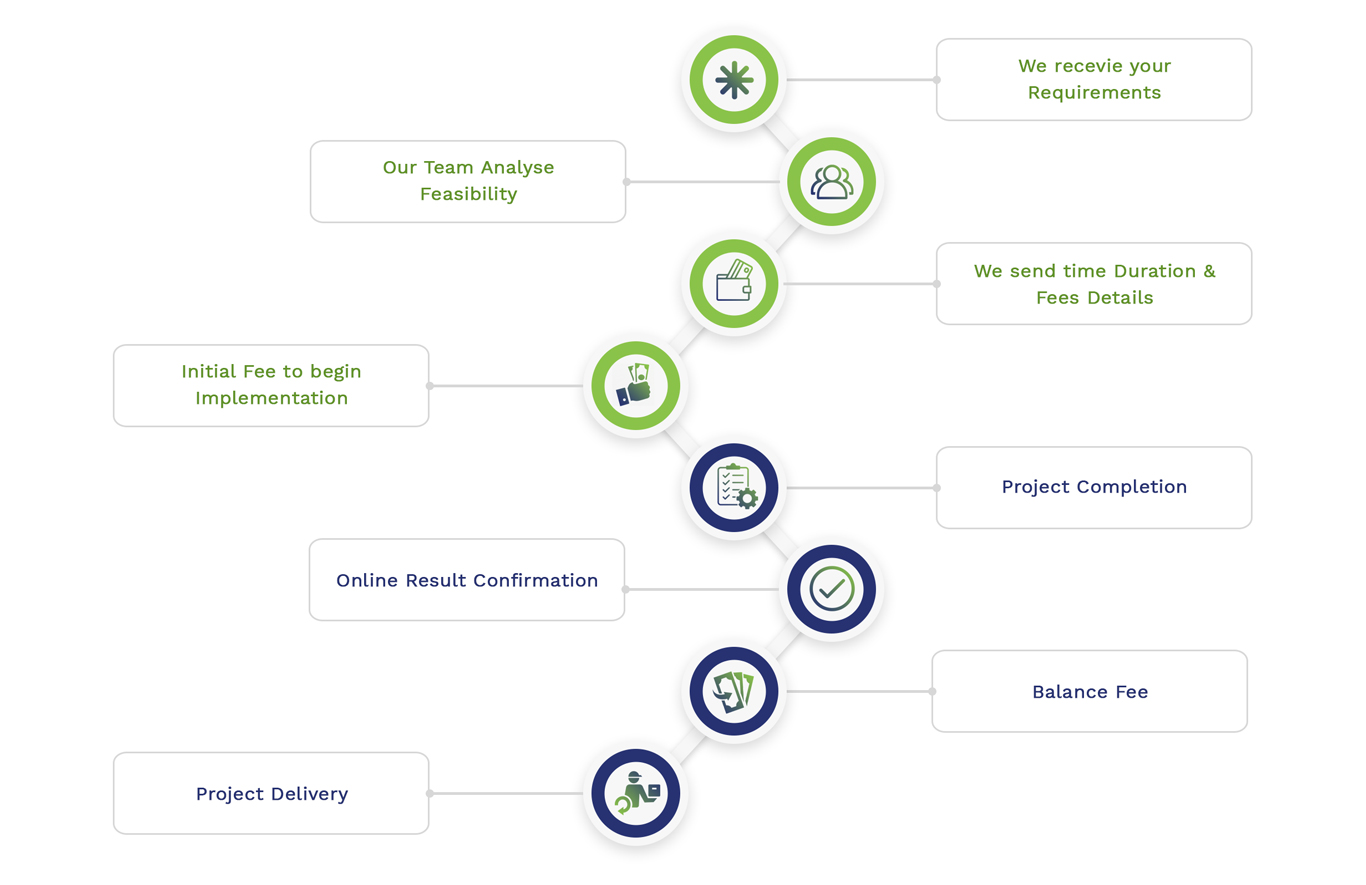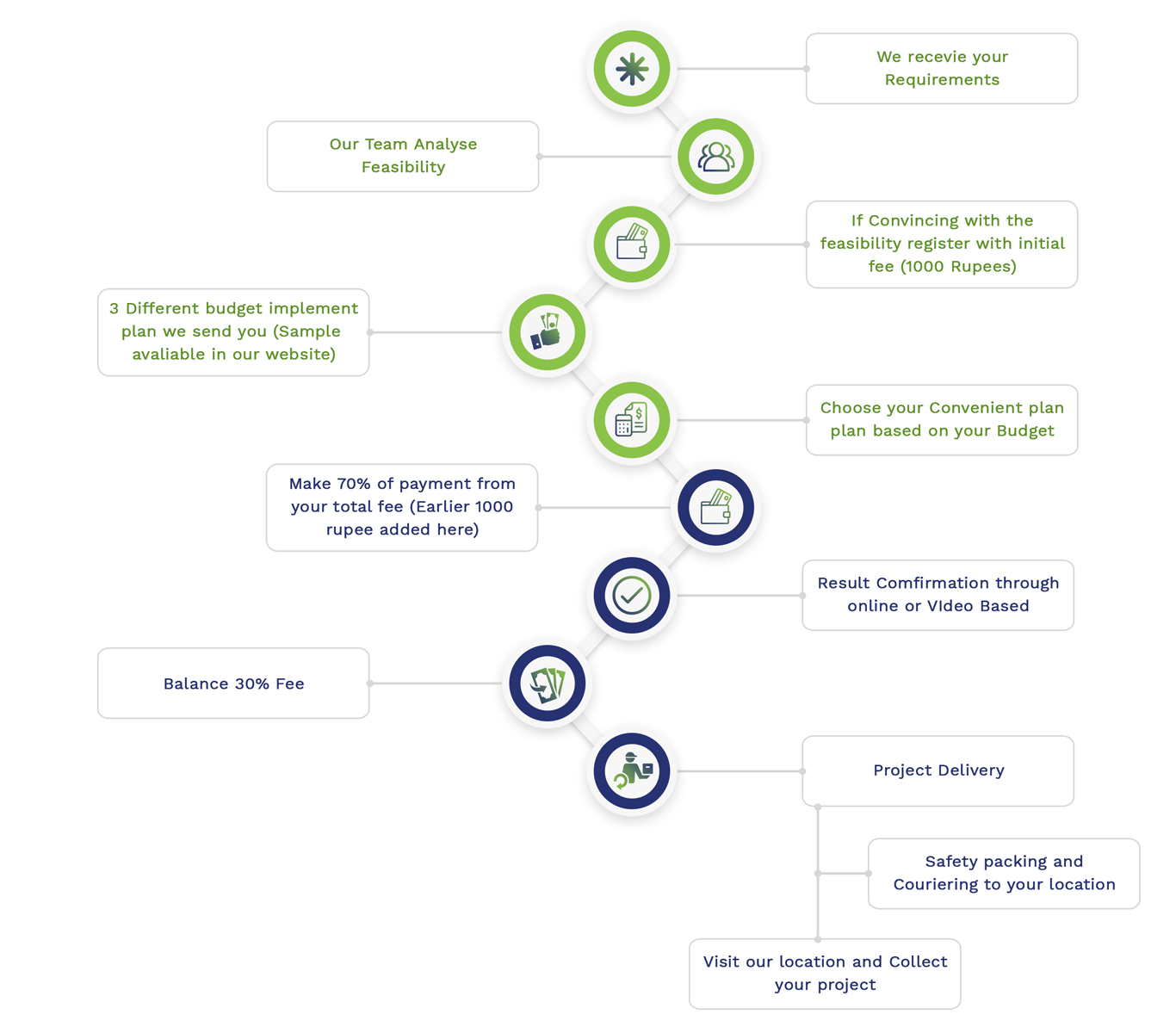Particle Simulation In Python is the process of implementing a simple particle simulation is examined as both complicated and intriguing. We suggest an instance based on how you could apply a basic particle simulation in Python with the support of Matplotlib for visualization and NumPy library for effective numerical calculations:
Simple Particle Simulation in Python
Step 1: Setup
If we do not have essential libraries, it is advisable to install them according to our requirements:
pip install numpy matplotlib
Step 2: Code Implementation
The following is a basic particle simulation code:
import numpy as np
import matplotlib.pyplot as plt
# Parameters
num_particles = 100
timesteps = 100
dt = 0.01
# Particle properties
positions = np.random.rand(num_particles, 2) * 10 # Random initial positions
velocities = np.random.randn(num_particles, 2) # Random initial velocities
# Simulation loop
for t in range(timesteps):
positions += velocities * dt
# Boundary conditions (particles bounce off the walls)
mask_x = (positions[:, 0] < 0) | (positions[:, 0] > 10)
mask_y = (positions[:, 1] < 0) | (positions[:, 1] > 10)
velocities[mask_x, 0] *= -1
velocities[mask_y, 1] *= -1
# Visualization
plt.clf()
plt.scatter(positions[:, 0], positions[:, 1], c=’blue’)
plt.xlim(0, 10)
plt.ylim(0, 10)
plt.title(f’Timestep {t}’)
plt.pause(0.01)
plt.show()
Description
- Initialization:
- Typically, the timestep size (dt), the number of particles, and the number of timesteps should be set.
- Our team aims to produce random preliminary placements and velocities for the particles.
- Simulation Loop:
- On the basis of the velocities, the placements of the particles are upgraded.
- Focus on implementing boundary limitations: in the route of the boundary, a particle springs back through overturning its velocity component when it strikes a boundary.
- Visualization:
- Through the utilization of Matplotlib, the placements of the particles are plotted at every timestep.
- As a means to visualize the motion of the particles, the plot is upgraded in actual time.
Extensions
Generally, this simple simulation can be prolonged in numerous aspects:
- Inter-particle Forces:
- In order to simulate more complicated communications, we plan to initiate forces among particles, like repulsive forces or gravitational force.
- Collisions:
- For simulating inflexible or flexible situations, our team focuses on applying collision identification and response among particles.
- External Forces:
- To impact movement of the particle, it is appreciable to append external forces like gravity or electromagnetic fields.
- Optimizations:
- To manage communications among an extensive number of particles in an effective manner, we intend to employ spatial partitioning approaches such as octree or quadtree.
- 3D Simulations:
- For more practicable settings, our team plans to prolong the simulation to three dimensions.
The following is an instance of appending gravitational force among particles:
num_particles = len(positions)
forces = np.zeros_like(positions)
for i in range(num_particles):
for j in range(i + 1, num_particles):
direction = positions[j] – positions[i]
distance = np.linalg.norm(direction)
if distance == 0:
continue
force_magnitude = G * masses[i] * masses[j] / distance**2
force = force_magnitude * direction / distance
forces[i] += force
forces[j] -= force
return forces
# Parameters
masses = np.ones(num_particles) # Equal masses for simplicity
# Simulation loop with gravitational forces
for t in range(timesteps):
forces = compute_forces(positions, masses)
velocities += forces / masses[:, np.newaxis] * dt
positions += velocities * dt
# Boundary conditions (particles bounce off the walls)
mask_x = (positions[:, 0] < 0) | (positions[:, 0] > 10)
mask_y = (positions[:, 1] < 0) | (positions[:, 1] > 10)
velocities[mask_x, 0] *= -1
velocities[mask_y, 1] *= -1
# Visualization
plt.clf()
plt.scatter(positions[:, 0], positions[:, 1], c=’blue’)
plt.xlim(0, 10)
plt.ylim(0, 10)
plt.title(f’Timestep {t}’)
plt.pause(0.01)
plt.show()
Important 50 particle simulation python Project Topics with details
If you are choosing a project topic on particle simulation with Python, you must prefer significant as well as impactful topics. To guide you in this process, some of the crucial and trending topics along with concise explanation and major tools are offered by us:
Particle Simulation Python Project Topics
- Gravitational N-Body Simulation
- Explanation: Through the utilization of Newton’s law of universal gravitation, we focus on simulating the gravitational forces among numerous particles such as planets or stars.
- Required Tools: Matplotlib, NumPy
- Brownian Motion Simulation
- Explanation: In a fluid, it is appreciable to design the random movement of particles which is created by collisions with molecules of the fluid.
- Required Tools: Matplotlib, NumPy
- Molecular Dynamics Simulation
- Explanation: With the support of conventional mechanics, our team aims to simulate the physical motions of molecules and atoms.
- Required Tools: Matplotlib, NumPy, SciPy
- Gas Particle Simulation (Ideal Gas Law)
- Explanation: As a means to investigate characteristics such as temperature, pressure, and volume, we focus on designing the activity of gas particles in a container.
- Required Tools: Matplotlib, NumPy
- Particle Swarm Optimization (PSO)
- Explanation: Through simulating the social activity of particles, address optimization issues by applying the PSO method.
- Required Tools: Matplotlib, NumPy
- Diffusion-Limited Aggregation
- Explanation: By means of the casual motion and collection of particles, our team intends to simulate the creation of fractal-like trends.
- Required Tools: Matplotlib, NumPy
- Electrostatic Particle Simulation
- Explanation: With the aid of Coulomb’s law, we plan to design the communications among charged particles.
- Required Tools: Matplotlib, NumPy
- Particle System for Fireworks
- Explanation: Encompassing particle emission, eruption, and motion, simulate fireworks by developing a particle model.
- Required Tools: Pygame, NumPy, Matplotlib
- Fluid Dynamics Simulation (SPH)
- Explanation: As a means to simulate the activity of fluids, it is beneficial to employ Smoothed Particle Hydrodynamics (SPH).
- Required Tools: Matplotlib, NumPy
- Sandpile Model
- Explanation: To explore self-regulated difficulties, our team focuses on simulating the activity of particles in a sandpile.
- Required Tools: Matplotlib, NumPy
- Plasma Simulation
- Explanation: Involving electromagnetic communications, the activity of charged particles in a plasma should be designed.
- Required Tools: Matplotlib, NumPy
- Cellular Automata
- Explanation: In order to simulate the activity of particles on a grid, we intend to execute cellular automata systems such as the Game of Life.
- Required Tools: Matplotlib, NumPy
- Granular Flow Simulation
- Explanation: Generally, the flow of granular resources such as grains or sand has to be simulated.
- Required Tools: Matplotlib, NumPy
- Radiation Particle Simulation
- Explanation: To simulate radiation transport, our team aims to design the communications of particles with matter.
- Required Tools: Matplotlib, NumPy
- Astrophysical Simulation
- Explanation: The creation and progression of astrophysical architectures such as constellations of stars or galaxies ought to be simulated.
- Required Tools: Matplotlib, NumPy
- Fluid-Structure Interaction
- Explanation: Our team focuses on simulating the communication among solid architectures and flow of a fluid.
- Required Tools: SciPy, NumPy, Matplotlib
- Thermal Conduction Simulation
- Explanation: To investigate thermal conductivity, we plan to design transmission of heat among particles in a solid.
- Required Tools: Matplotlib, NumPy
- Electron Transport Simulation
- Explanation: As a means to examine electrical conduction, it is approachable to simulate the motion of electrons in a conductor.
- Required Tools: Matplotlib, NumPy
- Elastic Collision Simulation
- Explanation: Typically, the elastic collisions among particles must be designed to explore kinetic theory.
- Required Tools: Matplotlib, NumPy
- Vortex Particle Simulation
- Explanation: To examine the commotion, the characteristic of vortex particles in a fluid ought to be simulated.
- Required Tools: Matplotlib, NumPy
- Cell Movement Simulation
- Explanation: For investigating biological procedures such as chemotaxis, our team focuses on designing the motion and communication of cells.
- Required Tools: Matplotlib, NumPy
- Solar System Simulation
- Explanation: In the solar system, we intend to simulate the orbits of planets and other astronomical bodies.
- Required Tools: Matplotlib, NumPy
- Magnetic Particle Simulation
- Explanation: Through the utilization of dipole-dipole communications, it is appreciable to design the communications among magnetic particles.
- Required Tools: Matplotlib, NumPy
- Nuclear Reactor Simulation
- Explanation: To investigate chain reactions, we simulate the characteristics of neutrons in a nuclear reactor.
- Required Tools: Matplotlib, NumPy
- Dust Particle Simulation in Space
- Explanation: Focusing on electromagnetic and gravitational forces, our team aims to create the activity of dust particles in space.
- Required Tools: Matplotlib, NumPy
- Bacterial Colony Simulation
- Explanation: Mainly, the development and communication of bacterial colonies has to be simulated.
- Required Tools: Matplotlib, NumPy
- Asteroid Impact Simulation
- Explanation: In order to explore volcanic activity, we intend to design the influence of an asteroid on a celestial surface.
- Required Tools: Matplotlib, NumPy
- Erosion Simulation
- Explanation: As a result of wind or water flow, it is significant to simulate the erosion procedures on a prospect.
- Required Tools: Matplotlib, NumPy
- Comet Tail Simulation
- Explanation: As the comet’s tail gets closer to the sun, our team designs the arrangement and characteristics of it.
- Required Tools: Matplotlib, NumPy
- Pollution Dispersion Simulation
- Explanation: In the atmosphere, the diffusion of pollution particles should be simulated.
- Required Tools: Matplotlib, NumPy
- Droplet Collision Simulation
- Explanation: Generally, the collision and combination of liquid droplets ought to be designed.
- Required Tools: Matplotlib, NumPy
- Snowflake Formation Simulation
- Explanation: From water vapour, we plan to simulate the creation of snowflakes.
- Required Tools: Matplotlib, NumPy
- Meteor Shower Simulation
- Explanation: At the time of a meteor shower, it is appreciable to design the path and influence of meteors.
- Required Tools: Matplotlib, NumPy
- Rocket Particle Exhaust Simulation
- Explanation: Typically, the exhaust particles from a rocket engine should be simulated.
- Required Tools: Matplotlib, NumPy
- Centrifugal Particle Separation
- Explanation: In a centrifugal field, we design the segregation of particles.
- Required Tools: Matplotlib, NumPy
- Magnetic Field Line Simulation
- Explanation: Across magnetic field lines, our team plans to visualize the movement of charged particles.
- Required Tools: Matplotlib, NumPy
- Optical Tweezers Simulation
- Explanation: By means of employing optical tweezers, we intend to simulate the capturing and handling of particles.
- Required Tools: Matplotlib, NumPy
- Seismic Wave Propagation Simulation
- Explanation: Across the Earth’s layer, it is significant to design the diffusion of seismic waves.
- Required Tools: Matplotlib, NumPy
- Phonon Transport Simulation
- Explanation: To examine thermal conduction, our team focuses on simulating the transportation of phonons in a solid.
- Required Tools: Matplotlib, NumPy
- Molecular Cloud Simulation
- Explanation: In space, the creation and progression of molecular clouds ought to be designed.
- Required Tools: Matplotlib, NumPy
- Atmospheric Particle Dynamics
- Explanation: In the atmospheric layer, we aim to simulate the motion and communication of particles.
- Required Tools: Matplotlib, NumPy
- Swarm Intelligence Simulation
- Explanation: Typically, systems of swarm intelligence like bird flocking or ant colony optimization must be applied.
- Required Tools: Matplotlib, NumPy
- Neutron Star Simulation
- Explanation: In the challenging platform of a neutron star, our team intends to design the activity of particles.
- Required Tools: Matplotlib, NumPy
- Aerosol Particle Simulation
- Explanation: In the atmosphere, we plan to simulate the diffusion and displacement of aerosol particles.
- Required Tools: Matplotlib, NumPy
- Particle-Based Fluid Simulation
- Explanation: To simulate fluid dynamics, it is beneficial to utilize particle-based techniques such as SPH.
- Required Tools: Matplotlib, NumPy
- Nanoparticle Interaction Simulation
- Explanation: The communications and activity of nanoparticles should be created.
- Required Tools: Matplotlib, NumPy
- Hurricane Particle Simulation
- Explanation: To examine the architecture, we focus on simulating the motion of particles within a hurricane.
- Required Tools: Matplotlib, NumPy
- Wind Tunnel Simulation
- Explanation: As a means to investigate aerodynamic characteristics, our team aims to design the activity of particles in a wind tunnel.
- Required Tools: Matplotlib, NumPy
- Electric Field Particle Simulation
- Explanation: The movement of charged particles in an electric field has to be visualized.
- Required Tools: Matplotlib, NumPy
- Particle Drift in a Magnetic Field
- Explanation: In a magnetic field, we focus on simulating the drift of charged particles.
- Required Tools: Matplotlib, NumPy
Encompassing gradual instruction, concise description, instance code, and 50 project concepts, a detailed note on particle simulation is recommended by us which can be beneficial for you in developing such kinds of projects.
Learn to create a particle simulation in Python with NumPy and Matplotlib. Reach out for professional guidance today with matlabprojects.org team by yourside.
Subscribe Our Youtube Channel
You can Watch all Subjects Matlab & Simulink latest Innovative Project Results
Our services
We want to support Uncompromise Matlab service for all your Requirements Our Reseachers and Technical team keep update the technology for all subjects ,We assure We Meet out Your Needs.
Our Services
- Matlab Research Paper Help
- Matlab assignment help
- Matlab Project Help
- Matlab Homework Help
- Simulink assignment help
- Simulink Project Help
- Simulink Homework Help
- Matlab Research Paper Help
- NS3 Research Paper Help
- Omnet++ Research Paper Help
Our Benefits
- Customised Matlab Assignments
- Global Assignment Knowledge
- Best Assignment Writers
- Certified Matlab Trainers
- Experienced Matlab Developers
- Over 400k+ Satisfied Students
- Ontime support
- Best Price Guarantee
- Plagiarism Free Work
- Correct Citations
Expert Matlab services just 1-click

Delivery Materials
Unlimited support we offer you
For better understanding purpose we provide following Materials for all Kind of Research & Assignment & Homework service.
 Programs
Programs Designs
Designs Simulations
Simulations Results
Results Graphs
Graphs Result snapshot
Result snapshot Video Tutorial
Video Tutorial Instructions Profile
Instructions Profile  Sofware Install Guide
Sofware Install Guide Execution Guidance
Execution Guidance  Explanations
Explanations Implement Plan
Implement Plan
Matlab Projects
Matlab projects innovators has laid our steps in all dimension related to math works.Our concern support matlab projects for more than 10 years.Many Research scholars are benefited by our matlab projects service.We are trusted institution who supplies matlab projects for many universities and colleges.
Reasons to choose Matlab Projects .org???
Our Service are widely utilized by Research centers.More than 5000+ Projects & Thesis has been provided by us to Students & Research Scholars. All current mathworks software versions are being updated by us.
Our concern has provided the required solution for all the above mention technical problems required by clients with best Customer Support.
- Novel Idea
- Ontime Delivery
- Best Prices
- Unique Work
Simulation Projects Workflow

Embedded Projects Workflow



 Matlab
Matlab Simulink
Simulink NS3
NS3 OMNET++
OMNET++ COOJA
COOJA CONTIKI OS
CONTIKI OS NS2
NS2






